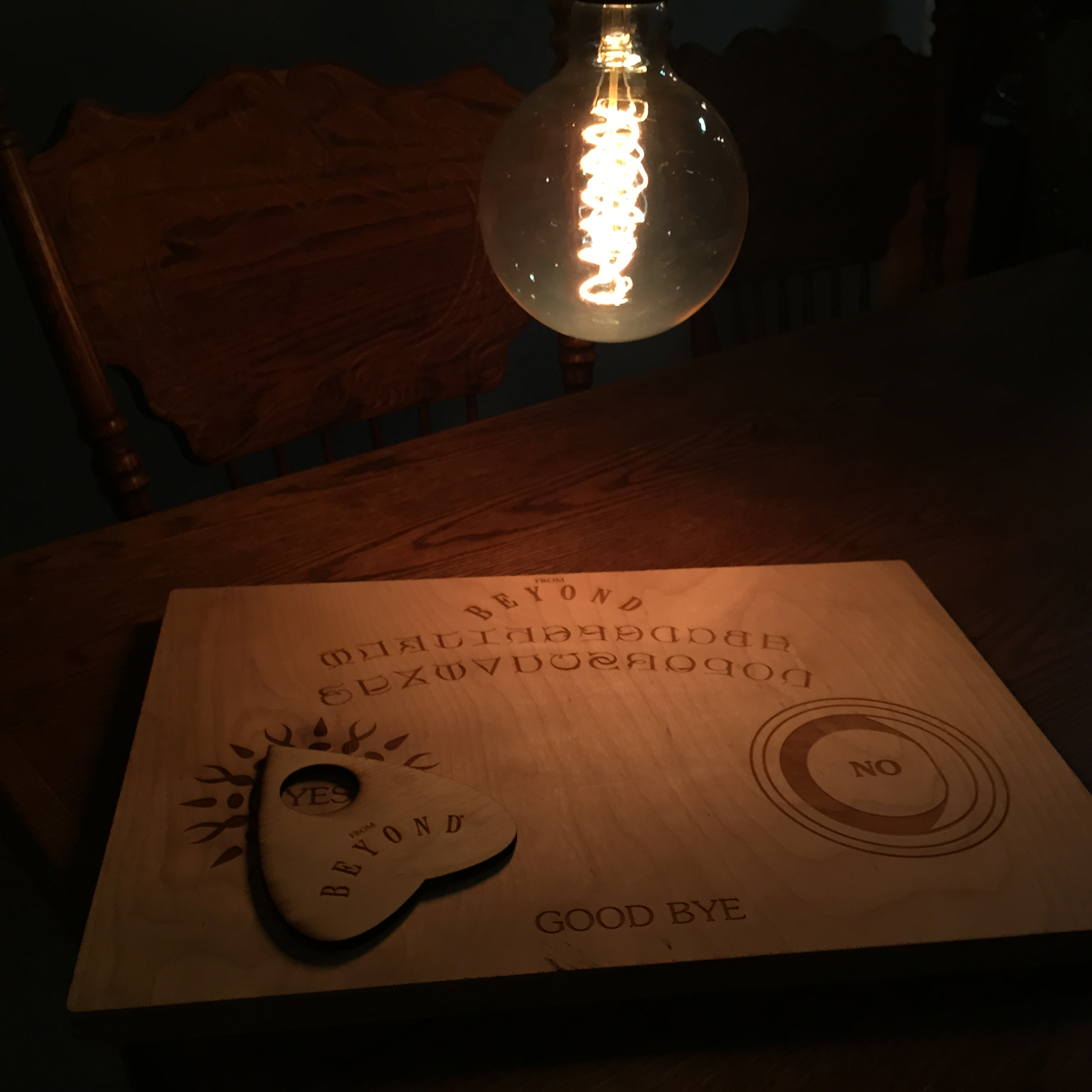ELO 2015: The End(s) of Electronic Literature
From Beyond Hybridity – Ouija Board Project
John Murray (University of California, Santa Cruz, USA) and Anastasia Salter (University of Central Florida, USA)
Hybridity and Synaesthesia
Thursday, August 6 • 17:30 - 18:30 (Lydgalleriet)
The installation plays with the boundaries of form and consciousness through play with the material and the immaterial. From Beyond, invites the reader to interact with a digitally augmented Ouija Board. The Ouija Board (also known as the “talking board”) is well-explored in popular culture as a device that is traditionally employed in an attempt to communicate with the dead, who are themselves voiceless and thus can be “heard” only through the indication of written letters. The board is thus itself an interface that plays at the boundaries of the real and the presumed supernatural, as it operates through superstition: readers place their fingers on the planchette and it moves to answer questions, with a “Yes” or “No” placed on the board. Likewise, our digitally enhanced Ouija Board invites the user to guide a planchette (a pointer) as a tactile interface for making binary decisions while traversing a hypertextual work on a screen that serves as a lens between the reader’s world and the world of the story.
Our Ouija board and planchette is the physical interface to a modified Twine application, hiding its mechanisms from the reader’s awareness. Twine is an HTML-based interactive fiction storytelling platform that already has a growing number of pieces demonstrating its power and range. Twine is best characterized by its accessibility and the versatility of discrete choices presented to users. Each segment of the scenes in the story are projected in an ethereal fashion through the use of templated text and choice-links whose backgrounds, images and fonts can be customized through stylesheets and which keep in the theme of a view into the real world from the spirit realm. Each choice a visitor or group of visitors to the installation makes by moving the planchette will be incorporated into an ongoing story. The web page will use web sockets to receive input from the Arduino microcontroller connected to the sensors embedded inside the board. These sensors are triggered by a magnet in the planchette itself, and thus the seam between digital and physical is hidden beneath the surface, appearing as any board of this type. This invites the reader to contemplate the ghost in the machine, and, indeed, to embody that ghost through their own physical movement to produce digital input. The reader in the work may first approach the Ouija board assuming they are entering a story in which they communicate with ghosts, but in fact the reader will embody (or disembody) a ghost as they interact with the installation. As the ghost story unfolds, our transformation of the Ouija board will draw upon both the history of supernatural belief in the board’s role as a communication device and the potential of digital modalities to produce new ghosts. As this year’s conference is focused on the “ends” of electronic literature, we believe this metaphorical exploration of endings and unseen yet tangible interfaces is particularly fitting.
